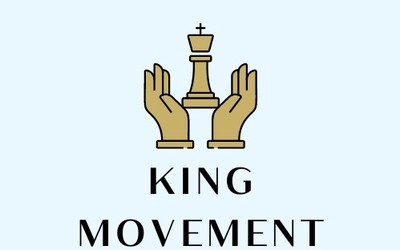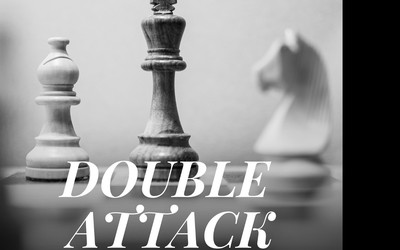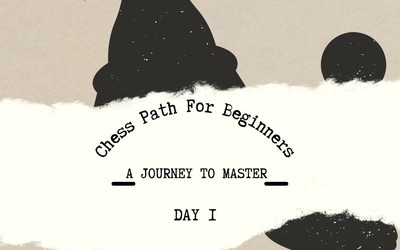
The Rule of the Square: A Chess Strategy Unveiled
In the intricate world of chess, where every move carries weight, the Rule of the Square emerges as a powerful strategy. This concept, often overlooked by novice players, can significantly enhance your understanding of the game. Let’s delve into what the Rule of the Square entails and how it can elevate your chess prowess.What Is the Rule of the Square?
The Rule of the Square is a geometric guideline that helps you visualize the potential reach of a piece. It revolves around the idea that a piece’s influence extends to the squares within a certain radius around it. By mentally drawing a square around a piece, you gain insights into its control over the board.
Applying the Rule of the Square
- Pawn Reach: For pawns, the Rule of the Square is straightforward. Imagine a square centered on the pawn. It encompasses the two squares directly in front of the pawn and the diagonals where it can capture opponents. Understanding pawn mobility within this square aids in pawn structure decisions.
- Knight’s Domain: Knights, with their unique L-shaped movement, benefit greatly from this rule. Draw a square around a knight, centered on its position. The knight can access any square within this square, even those it cannot directly attack. Use this visualization to plan knight maneuvers.
- Bishop’s Influence: Bishops thrive within their diagonals. Picture a square around a bishop, encompassing all the diagonals it controls. The Rule of the Square guides you in positioning your bishops optimally—aim for open diagonals and avoid blocked ones.
- Rook’s Territory: Rooks dominate ranks and files. Their square extends vertically and horizontally. When you activate a rook, consider its influence within this square. Connect your rooks, control open files, and restrict your opponent’s pieces.
- Queen’s Realm: The queen, being the most versatile piece, commands a large square. Visualize a square around the queen, combining the reach of both rook and bishop. Use this mental framework to exploit the queen’s power across the board.
Practical Benefits
- Piece Coordination: The Rule of the Square fosters better coordination. When you understand the squares a piece controls, you can harmonize your forces effectively. Knights and bishops can complement each other, covering different areas.
- Planning Ahead: Before moving a piece, assess its square. Is it optimally positioned? Can it exert more influence elsewhere? This evaluation guides your strategic choices.
- Pawn Breaks: Pawn breaks often involve pushing pawns within their square. Recognize the critical squares your pawns control and plan breaks accordingly.
Conclusion
Next time you sit at the chessboard, envision the Rule of the Square. Let it guide your decisions, enhance your piece coordination, and elevate your game. Remember, chess is not just about individual moves; it’s about mastering the squares.
Some Practical Example :
When does this apply?
The Rule of the Square is very helpful especially in pawn endgames, when the attacking king is out of reach of supporting the pawn. Using this technique a player can determine whether he/she can successfully promote the pawn, or if the enemy king will be in time to stop the pawn.
Using the Technique
Let's take this sample position:
White is trying to queen the pawn, and black is trying to stop the promotion. Clearly the white king is far away from the action and cannot support the pawn.
Case 1: White to move. Is white winning or can black draw?
Well it turns out that white is winning due to an extra tempo. The natural move here is a5, which white will go ahead and play. Pay attention to the diagram below.
The white pawn is on a5, and the promotion square is a8. This length is 4 units (an arbitrary measurement) (though the promotion square is 3 squares away).
What you can do is draw a 4x4 square, with the corners a5, a8, d8, and d5. Note that it is black to move here.
Now, even with black to move, black is not able to enter the square of the pawn. Ke5 is 1 square away, but the King is not in the square. And so it can be safely determined that white will successfully queen the pawn.
Case 2: Black to Move
Now let's go back to the original position, but this time it is black to move. And so the pawn will be on a4 and the square will be drawn as such:
Because it is black to move, you can clearly see that both Ke4 and Ke5 will allow the King to enter the square of the pawn. And so black is able to draw. A sample line is
1...Ke4 2. a5 Kd5 3. a6 Kc6 4. a7 Kb7 5. a8=Q+ Kxa8 and the game ends in a draw.
Case 3 - The black king's path is obstructed
Consider the position below. Note: the white king has been moved to f1 but this makes absolutely no difference.
This is black to move, and the square of the a4 pawn has been drawn. Considering what we have discussed, you may be inclined to say that Ke4 is a draw, as the King is in the square of the pawn.
However, this is a special case where despite Ke4 being in the square black is still losing. This is because the king will need to go diagonally left to a8 in order to stop the pawn (see below):
Unfortunately for black, his own pawn on c6 obstructs the path for the black King, and so this is the one time where Black wishes he didn't have a pawn like this. White is clearly winning because after a5 black will have to go around the pawn with Ke5 and after a6 Kd6 a7 black is not in the square.
Now of course this rule is applicable only if the white king is too far. If the white king is close enough it can of course support the pawn's promotion and lay the red carpet.
Quest: Some Puzzles on Rule of Square :
Try to solve by Yourself: kindly Click on the link and Solve the Rule of Square postiion
More blog posts by officialchessBunny

The King's Movement Explained
The King’s movement in chess is a fundamental aspect of the game.
Mastering the Double Attack in Chess: A Tactical Triumph
In the intricate world of chess, where every move counts, the double attack stands as a potent weapo…
Chess Path For Beginners: A Journey to Mastery - DAY 1
Welcome, aspiring chess enthusiasts! Whether you’re a curious beginner or someone rediscovering the …